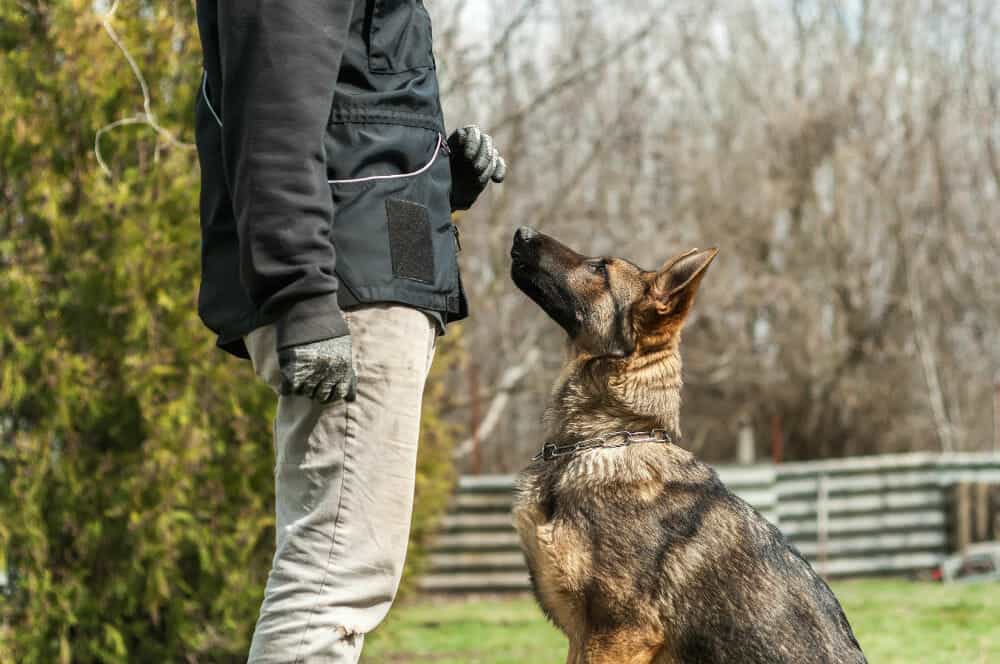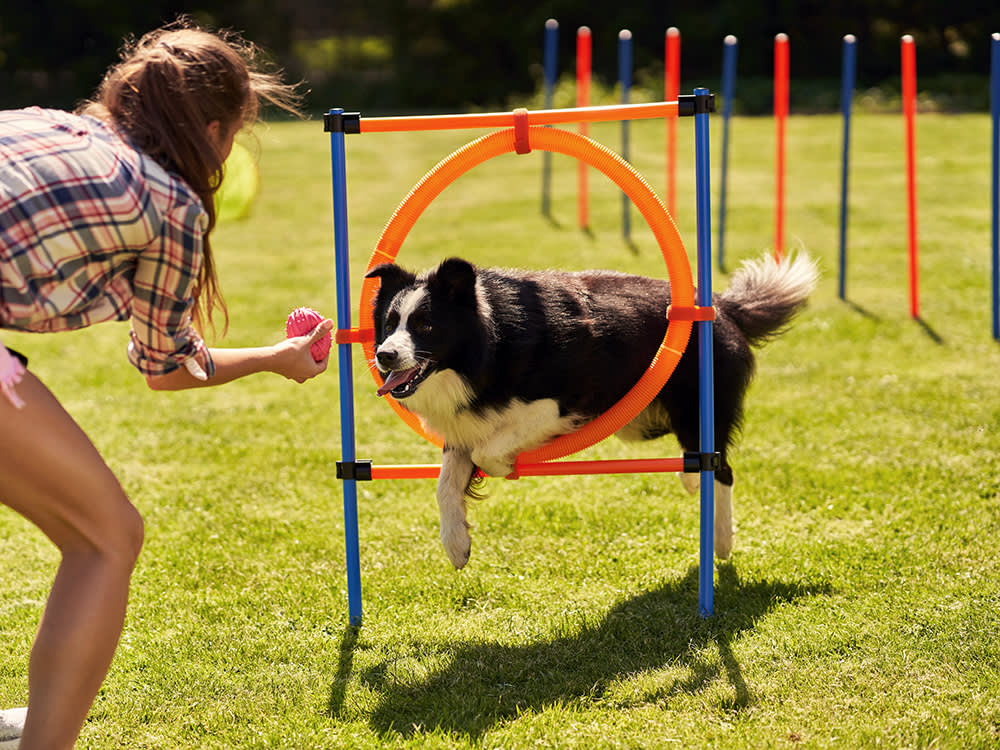Vital Tips for Effective Dog Training: A Guide for Animal Owners
Reliable dog training is a diverse procedure that requires a strategic technique customized to both the animal's temperament and the owner's purposes. Understanding exactly how to browse these barriers can dramatically boost the training experience, inevitably transforming the relationship between proprietor and pet.
Comprehending Canine Behavior
Comprehending pet dog habits is necessary for efficient training and cultivating a harmonious connection between canines and their proprietors. Dogs communicate mostly through body language, vocalizations, and activities, making it crucial for proprietors to analyze these signals accurately. Recognizing a canine's stance, tail placement, and ear positioning can supply understandings into its emotion. A wagging tail does not constantly show happiness; it can also signal enjoyment or anxiousness.

Socializing plays a substantial duty in pet habits; exposure to different settings, people, and various other animals can substantially impact a canine's temperament. Additionally, elements such as type characteristics and individual temperament should guide training techniques, as some types may have details behavioral attributes that necessitate customized methods. By comprehending these aspects, proprietors can develop a supportive setting that urges positive habits, causing effective training end results and a deeper bond with their animals.
Developing Regular Commands
Efficient interaction with your dog begins with developing regular commands. This foundational component of training is important for promoting understanding between you and your animal. Uniformity in the commands you utilize makes certain that your pet dog can accurately link details words or phrases with the desired habits.
When choosing commands, select clear, unique words that are very easy to separate and claim from one another. Stay clear of utilizing similar-sounding commands that might puzzle your pet. For instance, using "sit" and "stay" is ideal, however "rest" and "hit" might lead to misconceptions.
Furthermore, preserve the same tone and volume for each and every command. Pet dogs are delicate to singing cues, so varying your tone can create confusion.
It is equally vital to make sure that all member of the family are on the same page regarding the commands used. A united front in command usage will prevent combined signals and strengthen the understanding process.
Positive Reinforcement Techniques
The power of positive reinforcement in dog training exists in its capacity to motivate preferred habits with rewards and praise. This strategy is based in the principle that habits complied with by positive results are most likely to be duplicated. By including favorable support into your training regimen, you can efficiently shape your canine's behavior in a useful way.
To apply favorable support, it's vital to identify what encourages your canine, whether it be deals with, playthings, or verbal praise. When your canine does a desired activity, such as sitting on command, quickly award them with a treat or affection. This organization in between the command and the positive outcome enhances their understanding.
It's essential to timing site link the rewards appropriately; supplying the support within secs of the preferred habits helps your canine make the connection (dog training). In addition, uniformity is essential-- make sure that all relative make use of the same commands and benefit systems to stay try here clear of confusion

Slowly, you can lower the regularity of deals with as your canine discovers the behavior, transitioning to praise or intermittent rewards. This technique not only promotes a strong bond between you and your pet however likewise advertises a positive learning environment, making training an enjoyable experience for both.
Socialization and Communication
Constantly subjecting your pet dog to a variety of environments, people, and various other pets is vital for their social growth. Socializing ought to start early, preferably during the crucial home window of 3 to 14 weeks, when pups are most responsive to new experiences. Nonetheless, older canines can additionally profit from ongoing socializing initiatives.
Introduce your dog to different settings, such as parks, pet-friendly stores, and city areas. This direct exposure assists them adapt to various stimulations, decreasing stress and anxiety and fear responses. Encourage favorable interactions with various other canines and individuals, making sure that these experiences are risk-free and regulated to promote self-confidence.
Make use of organized playdates with courteous dogs, as this can boost your pet's social abilities and instruct them appropriate actions. Obedience classes and training sessions also supply excellent chances for socialization, allowing your dog to interact with others in a monitored environment.
Screen your canine's body movement during communications, as this will certainly aid you assess their comfort degree. Slowly enhance exposure to more difficult situations while guaranteeing that each experience is positive. A well-socialized pet dog is most likely to display well balanced habits, making them a joy to have in any kind of setup.
Dealing With Common Training Obstacles
Every dog owner will certainly experience training difficulties eventually, despite their pet's age or socializing level. Recognizing typical issues such as stubbornness, diversions, and fearfulness can aid in developing efficient approaches for enhancement.

Disturbances during training sessions can thwart focus. To combat this, begin training in a silent atmosphere with minimal stimulations. Gradually introduce interruptions as the canine becomes a lot more proficient in commands. Short, frequent training sessions are likewise reliable in keeping interest.
Terror can hinder a pet's knowing process. Gradual desensitization to the source of anxiety, coupled with positive support, can help alleviate anxiety. Perseverance is important; never ever force a dog right into a scenario that triggers distress, as this may intensify the problem.
Ultimately, understanding and resolving these common difficulties with an organized technique will promote a much more efficient training experience, reinforcing the bond between pet dog and proprietor while advertising effective understanding.
Final Thought
In summary, effective dog training counts on an extensive understanding of canine behavior, the establishment of consistent commands, and the application of positive support techniques. Socializing plays an important role in establishing well-adjusted animals, while dealing with typical training challenges needs patience and versatility. By executing these vital methods, animal proprietors can foster a strong bond with their canines and promote desirable habits, ultimately bring about a harmonious partnership between humans and their canine buddies.
Understanding canine habits is important for efficient training and fostering a harmonious relationship in between dogs and their owners.Socialization plays a considerable function in canine behavior; exposure to different atmospheres, people, and other animals can dramatically affect a pet dog's personality.The power of favorable reinforcement in pet dog training exists in its capacity to motivate preferred actions with benefits and appreciation. By including positive reinforcement into your training program, you can successfully form your dog's actions in a positive way.
In summary, effective dog training counts on a thorough understanding of canine habits, the facility of regular commands, and the application of favorable reinforcement strategies.